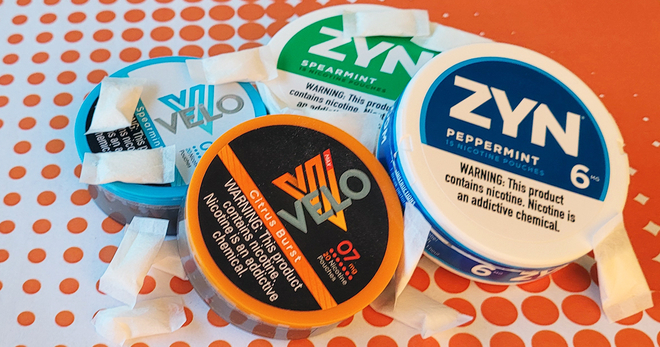How a free vaping prevention curriculum can help middle schools
Youth vaping is continuing at epidemic levels – more than 2 million middle and high school students used e-cigarettes in 2021 – and some start very young. According to the latest data the 2021 Monitoring the Future Survey, 7.6% of 8th graders were current e-cigarette users, meaning they had vaped in the last 30 days. Those numbers increase to 13.1% of 10th graders and almost one in five – 19.6% – of 12th graders.
Middle schools have an important role to play in reaching students before they get to high school with the facts they need to make informed choices. Vaping: Know the truth, a free national youth vaping prevention curriculum developed as part of Truth Initiative’s proven-effective and nationally recognized truth® campaign, gives young people the facts about e-cigarette use and provides resources to quit with This is Quitting, a first-of-its-kind text message program that is already helping more than 430,000 young people. Vaping: Know the truth, which Truth Initiative and Kaiser Permanente launched in collaboration with the American Heart Association, is available to schools and the public at large at no cost through the leading social impact education innovator, EVERFI.
The curriculum, which offers a modern approach to guide teachers and educate America’s youth about the dangers associated with e-cigarette use, is meeting an urgent need. Here’s why.
Youth need the facts about vaping
Many young people are unaware of the risks of e-cigarette use, including that it can worsen symptoms of anxiety and depression. In fact, according to a 2021 Truth Initiative survey, a large majority of young people who have used e-cigarettes started vaping as an attempt to lessen their stress, anxiety, or depression. The common misconception that nicotine is a stress reliever may be rooted in the cycle of nicotine withdrawal. Irritability, anxiety, and depression are some of the symptoms of nicotine withdrawal and using nicotine may relieve these symptoms temporarily. Youth exposure to nicotine can harm brain development, alter nerve cell functioning and make adolescent brains more susceptible to other addictive drugs.
Vaping: Know the truth fills critical knowledge gaps about how these products can be detrimental to their health, as well as how e-cigarette marketers intentionally target young people. The 40- to 45-minute self-administered interactive course is comprised of four learning modules: “Know,” which introduces students to the topic of vaping; “Uncover,” which provides hard facts around marketing efforts from Big Tobacco; “Overcome,” which explores the dangers of nicotine addiction; and “Change,” which delves into self-care, mental health, and the benefits of living a vape-free life.
The new youth prevention and education effort Breath of Stress Air debunks the marketing of e-cigarettes as stress relievers and calls out the tobacco industry for selling vaping as a way to deal with stress, especially during the COVID-19 pandemic. Breath of Stress Air expands the latest campaign from truth, It’s Messing with Our Heads, which exposed nicotine’s role as a contributor to the worsening youth mental health crisis through the launch of a fake vaping company called Depression Stick!
Teachers need resources to help
Teachers have reported youth vaping is impacting their ability to educate students because of frequent class interruptions, decreased student focus and few resources to help them address the problem, according to Truth Initiative research gathered in our report “A Classroom Crisis: How the Youth Vaping Epidemic Is Impacting Teachers.” Teachers and administrators who worked in schools with e-cigarette policies and reported receiving training on those policies had higher odds of recognizing e-cigarettes and intervening on student e-cigarette use compared to those without policies and trainings, according to recently published Truth Initiative research.
The study, which was published in PLOS One, surveyed 1,500+ U.S. middle and high school teachers and administrators and found that those at schools with policies in place had 3.9X higher odds of recognizing e-cigarettes, 3X higher odds of talking to students about avoiding e-cigarettes, and 1.5X higher odds of reporting that students had been caught using e-cigarettes at school, compared to survey respondents without such policies. With more students back to in-person school and e-cigarette use among young people persisting at epidemic levels, findings highlight the importance of instituting school e-cigarette policies and trainings to help curb the crisis.
Young vapers want to quit and need help
Most young e-cigarette users want to quit vaping—preventing it in the first place means they never have to. A majority of current young e-cigarette users surveyed say they intend to quit, with one-third reporting that they had tried to quit in the past year, according to Truth Initiative research published in Preventive Medicine Reports.
This is Quitting is targeted specifically to young people and is tailored based on age (within 13 to 24 years old) and product usage to give teens and young adults appropriate recommendations about quitting. The program incorporates text messages from other young people like them who have attempted to, or successfully quit, e-cigarettes. A randomized clinical trial found that young adults aged 18-24 who used This is Quitting had nearly 40% higher odds of quitting compared to a control group. Our messages show the real side of quitting, both the good and the bad, to help young people feel motivated, inspired, and supported throughout their quitting process.
To learn more about Vaping: Know the truth and how you can use the curriculum at no cost in your school, visit truthinitiative.org/curriculum.
More in emerging tobacco products
Want support quitting? Join EX Program
By clicking JOIN, you agree to the Terms, Text Message Terms and Privacy Policy.
Msg&Data rates may apply; msgs are automated.


